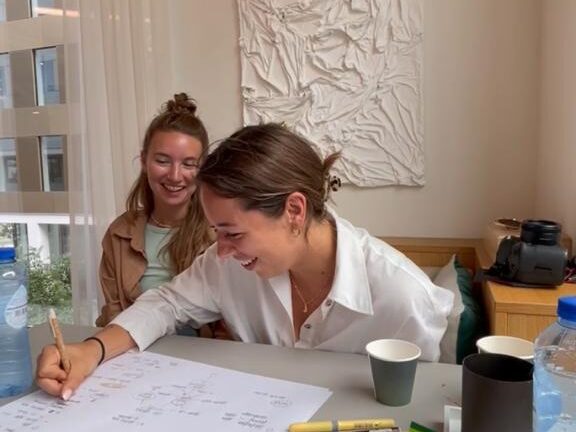Hey there, visionary entrepreneurs and digital dreamers! I’m Laurence Uvin, and today, we’re embarking on an exciting journey to design your website with a purpose. Your website isn’t just an online presence; it’s a powerful tool that can help you connect with your audience, showcase your brand, and achieve your business goals. In this step-by-step guide, I’ll walk you through the process of creating a website that serves your unique purpose and leaves a lasting impression on your visitors.

The significance of purposeful website design
Before we dive into the steps, let’s discuss the significance of purposeful website design. Your website is often the first point of contact for potential customers or clients, and its design can make or break their first impression. A purposeful website design not only looks visually appealing but also guides visitors toward specific actions, whether it’s making a purchase, subscribing to your newsletter, or booking a consultation.
Step 1: Define your goals
The first step in designing your website with purpose is to define your goals. Ask yourself:
– What do you want your website to achieve?
– Who is your target audience?
– What actions do you want visitors to take on your site?
– How will your website support your overall business strategy?
Having clear goals will provide a roadmap for your website design process.
Step 2: Choose the right platform
Selecting the right website platform is crucial. WordPress, Squarespace, Wix, and Shopify are popular options, each with its own strengths. Consider your technical skills, budget, and long-term scalability when making your choice.
Step 3: Craft your brand identity
Your website is an extension of your brand. Develop a strong brand identity by defining your brand colors, typography, and visual elements. Ensure consistency in design to create a memorable and cohesive user experience.
Step 4: Plan your content
Content is king on the web. Plan your website’s content carefully, including homepage messaging, about pages, product or service descriptions, and blog posts. Create content that resonates with your target audience and supports your goals.
Step 5: User-friendly navigation
Design an intuitive navigation structure that helps visitors find what they’re looking for easily. Use clear menus and labels, and consider user experience (UX) principles to enhance navigation.
Step 6: Mobile responsiveness
In today’s mobile-driven world, ensure that your website is fully responsive and looks great on all devices. Mobile-friendly design is crucial for user satisfaction and SEO rankings.
Step 7: Visual appeal
Design a visually appealing website with high-quality images, graphics, and multimedia elements. Use eye-catching visuals that align with your brand and enhance the overall aesthetics.
Step 8: Call-to-action buttons
Strategically place CTA buttons throughout your site. These buttons should prompt visitors to take action, such as signing up, making a purchase, or contacting you.
Step 9: Test and optimize
Before launching, thoroughly test your website to ensure functionality, load times, and cross-browser compatibility. Regularly monitor your site’s performance and make improvements based on user feedback and analytics.
Step 10: Launch and promote
Once you’re satisfied with your website, it’s time to launch! Promote your website through social media, email marketing, and other channels to attract visitors and achieve your goals.
Step 11: Analyze and iterate
After launch, analyze website analytics to track performance and user behavior. Use insights to refine your website and continuously improve its effectiveness in achieving your goals.
In conclusion
Designing your website with purpose is a creative and strategic process that can elevate your online presence and drive business growth. By following these steps and infusing your unique brand personality into your website, you’ll create a digital space that not only looks beautiful but also serves as a powerful tool in achieving your entrepreneurial dreams.
So, go ahead, embrace the art of purposeful website design, and let your online presence become a true reflection of your passion and purpose.
Until next time,
Laurence Uvin
+ toon comments
- Hide Comments
Voeg een comment toe